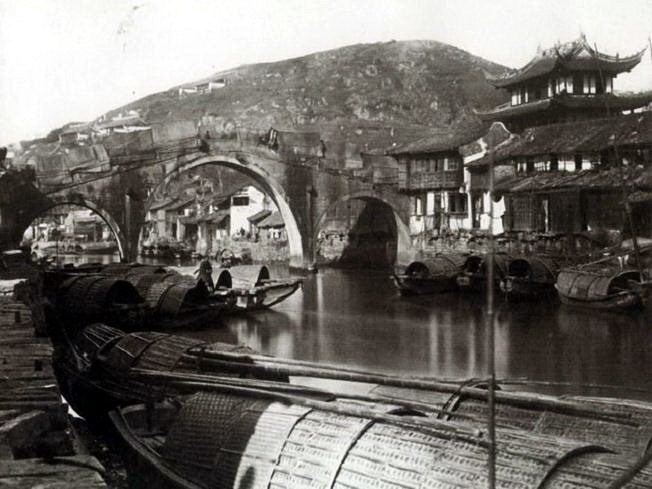Crosses Yao River Height 6 m (20 ft) Longest span 14 m Number of spans 3 | No. of spans 3 Bridge type Arch bridge | |
 | ||
Construction begin Song Dynasty (wooden)Yuan Dynasty (stone)Qing Dynasty (repair) Address Fuqian Rd, Yuyao Shi, Ningbo Shi, Zhejiang Sheng, China, 315400 Similar Roushi Former Residence, Drum Tower, Zhongshan Square, Tianxia Yuyuan, Qita Temple | ||
The Tongji Bridge (traditional Chinese: 通濟橋, simplified Chinese: 通济桥, pinyin: Tōng Jì Qiáo), is a famous stone arch bridge located in Yuyao, Ningbo, Zhejiang Province. "Tongji Bridge" ("Tong" means transport/transportantion, "Ji" means aid or cross a river) is a very common name for bridges in ancient China.
Contents
History
The bridge has a very long history. It is the first large-sized arch bridge in the Eastern Zhejiang region, so it's also called the First Bridge of Eastern Zhe (traditional Chinese: 浙東第一橋, simplified Chinese: 浙东第一桥, pinyin: Zhè Dōng Dì Yī Qiáo, "Zhe" is the short name for Zhejiang Province).
The construction of the bridge started first during the Qingli (traditional Chinese: 慶曆, simplified Chinese: 庆历, pinyin: Qìng Lì) Era (1041–1048) of the Northern Song Dynasty, and it was wooden structure. Its original name was Dehui Bridge (traditional Chinese: 德惠橋, simplified Chinese: 德惠桥, pinyin: Dé Huì Qiáo). And its name later was changed to Hong Bridge (traditional: 虹橋, simplified Chinese: 虹桥, pinyin: Hóng Qiáo, "Hong" means rainbow). It was destroyed in wars and reconstructed for several times.
In Yuan Dynasty, a Buddhism monk named Huixing (traditional Chinese: 惠興, simplified Chinese: 惠兴, pinyin: Huì Xìng) started rebuilding the bridge using rocks, but he died when the construction was half-finished. Then a Taoist named LI Daoning (traditional Chinese: 李道寧, simplified Chinese: 李道宁, pinyin: Lǐ Dào Níng, his surname was Li) continued his unfinished work. In the third year (year 1332) of the Zhishun (tradition Chinese: 至順, simplified Chinese: 至顺, pinyin: Zhì Shùn) Era of the Yuan Dynasty, the bridge was finally finished, and was renamed as "Tongji Bridge". There was a stone tablet aside the bridge, and there were eight characters on the stele - Hai Bo Guo er Feng Fan bu Xie (traditional Chinese:, simplified Chinese: 海舶过而风帆不解, pinyin: Hǎi Bó Guò ér Fēng Fān bú Jiě ), which means ships can go through the bridge's arch without any obstacles.
From the seventh to the ninth year (1729–1731) of the Yongzheng Era in Qing Dynasty, the local government repaired and rebuilt most part of the bridge again, and that's the bridge nowadays looks like.
Present
The bridge nowadays is still in use and has busy traffic everyday. The bridge has three spans, with the central/main span the largest one, and the rest two are equal. The main span is 14.2 meter. The total length of the bridge is about 50 meters. It has 106 steps.
In front of the bridge, it was the old city gate of Yuyao, which is also an ancient structure which is named Shunjiang Building (traditional Chinese: 舜江樓, simplified Chinese: 舜江楼, pinyin: Shùn Jiāng lóu). The bridge and the old city gate together now are the key cultural relic under the city's protection.
